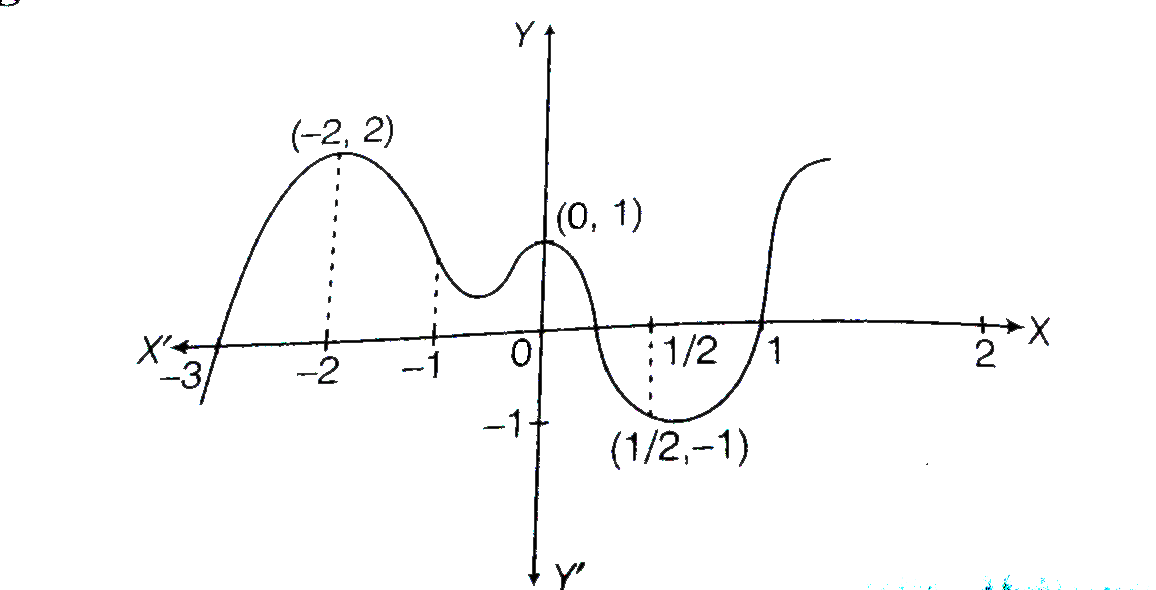A quadratic trinomial P(x)=ax2+bx+c is such that the equation P(x)=x has o real roots. Prove that in this case equation P(P(x))=x has no real roots either.Solution in Bengali
Since the equation ax2=bx+c=x has no real roots, the expression P(x)−x=ax2+(b−1)x+c assumes values of one sing ∀x∈ R, say P(x)=x> 0 . Then
P(P(x0))−P(x0)>0
for any x=x0,i.e.,P(x0)>x0 and hence P(P(x0))>x0. Therefore,
x0 cannot be a root of the fourth degree equation P(P(x))=x .
Topper's Solved these Questions
- BOOK - CENGAGE PUBLICATIONCHAPTER - THEORY OF EQUATIONSEXERCISE - SOLVED EXAMPLES14videos
THEORY OF EQUATIONS
- BOOK - CENGAGE PUBLICATIONCHAPTER - THEORY OF EQUATIONSEXERCISE - CONCEPT APPLICATION EXERCISE 2.13videos
THEORY OF EQUATIONS
- BOOK - CENGAGE PUBLICATIONCHAPTER - THEORY OF EQUATIONSEXERCISE - Multiple Correct Answer6videos
THEORY OF EQUATIONS
- BOOK - CENGAGE PUBLICATIONCHAPTER - STRAIGHT LINESEXERCISE - ARCHIVES (NUMERICAL VALUE TYPE)1videos
STRAIGHT LINES
- BOOK - CENGAGE PUBLICATIONCHAPTER - THREE DIMENSIONAL GEOMETRYEXERCISE - All Questions291videos
THREE DIMENSIONAL GEOMETRY
Similar Questions
IF [x2−2x+a]=0 has no solution, then find the values of a (where [⋅] represents the greatest integer).
01:34View SolutionIf x=1andx=2 are solutions of equations x3+ax2+bx+c=0anda+b=1, then find the value of b.
05:02View SolutionIf c≠0 and the equation p/(2x)=a/(x+c)+b/(x−c) has two equal roots, then p can be a. (√a−√b)2 b. (√a+√b)2 c. a+b d. a−b
05:25View SolutionFor a point P in the plane, let d1(P)andd2(P) be the distances of the point P from the lines x−y=0andx+y=0 respectively. The area of the region R consisting of all points P lying in the first quadrant of the plane and satisfying 2≤d1(P)+d2(P)≤4, is
02:03View SolutionFind the angle between the line whose direction cosines are given by l+m+n=0andl2+m2−n2=0.
00:58View SolutionFind the value of p for which the quadratic equation x(x-4)+p0 has real roots.
04:24View SolutionA quadratic trinomial P(x)=ax2+bx+c is such that the equation P(x)=x has no real roots. Prove that in this case equation P(P(x))=x has no real roots either.
04:49View SolutionA monic quadratic trinomial P(x) is such that P(x)=0 and P(P(P(x)))=0 have a common root,then
02:54View SolutionThe quadratic equation p(x)=0 with real coefficients has purely imaginary roots. Then the equation p(p(x))=0 has
05:38View SolutionThe roots of a quadratic equation xp=px are
03:33View SolutionThe quadratic equation p(x)=0 with real coefficients has purely imaginary roots. Then the equation p(p(x))=0 has A. only purely imaginary roots B. all real roots C. two real and purely imaginary roots D. neither real nor purely imaginary roots
04:41View SolutionA quadratic trinomial P(x)=ax2+bx+c is such that the equation P(x)=x has no real roots. Prove that in this case equation P(P(x))=x has no real roots either.
02:50View SolutionA quadratic trinomial P(x)=ax2+bx+c is such that the equation P(x)=x has o real roots. Prove that in this case equation P(P(x))=x has no real roots either.
05:02View Solutionद्विघात समीकरण x2+(p+iq)x+3i=0 में p और q वास्तविक है यदि मूलों के वर्गो का योग 8 है, तो
03:39View Solutionयदि p वास्तविक है तथा समीकरण p(x + 1) (x + 3) + 2 = 0 के मूल वास्तविक नहीं है , तो p का मान ज्ञात कीजिये।
02:20View SolutionThe minimum number of real roots of equation (p''(x))2+p'(x).p'''(x)=0
 06:46View Solution
06:46View Solution

